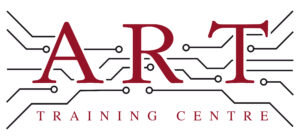Definition
Polyimide is a high-performance polymer used in electronics manufacturing. It is known for its exceptional thermal stability, chemical resistance, and electrical insulation properties. Polyimide serves as a material in flexible printed circuit boards (PCBs) and as an adhesive in various electronic components. Its unique characteristics make it an essential component in high-temperature and demanding electronic applications.
How It’s Used in the Industry
In electronics assembly, Polyimide is often used as a substrate material for flexible PCBs, allowing for compact and lightweight designs. During soldering, it can serve as a protective layer to prevent damage to sensitive components from heat. In rework processes, Polyimide tapes are applied to mask areas during soldering or to protect components from flux. Its insulation properties make it crucial for maintaining circuit integrity. Understanding Polyimide is vital for both technicians in training and experienced professionals, as it ensures quality and reliability in electronic devices.
History & Origins
Polyimide was first developed in the 1960s and quickly gained traction in the electronics industry due to its unique properties. Early adoption occurred in aerospace and military applications, where high-performance materials were essential. The development of IPC standards in the 1980s further formalised its use in electronics manufacturing, promoting consistency and quality. Over time, advancements in technology and manufacturing processes have solidified Polyimide’s role as a key material in modern electronics.
Variations
There are several types of Polyimide, including films, foams, and adhesives, each tailored for specific applications. For instance, Polyimide films are often used in flexible circuits, while adhesives are utilized for bonding components. Compared to other materials like epoxy, Polyimide offers superior thermal resistance and flexibility. Understanding these variations helps learners grasp the appropriate uses and advantages of Polyimide in different electronic contexts.
Modern Applications
Today, Polyimide is widely used in electronics production, particularly in the manufacturing of flexible and rigid-flex PCBs. Its properties are essential in surface mount and through-hole assembly processes, ensuring high-performance and reliable connections. Polyimide is also crucial in professional training, as it helps technicians understand the importance of quality materials and compliance with IPC standards, enhancing the overall reliability of electronic products.
Practical Tips & Training
When working with Polyimide, it’s important to use appropriate safety measures, such as gloves and eye protection, to avoid skin and eye irritation. Inspect Polyimide materials for any defects before use, ensuring their integrity. Useful tools include precision cutting tools for Polyimide films and heat-resistant tapes for masking. Structured training and certification in electronics are essential for mastering these materials, as they greatly impact the quality and reliability of electronic assemblies.


